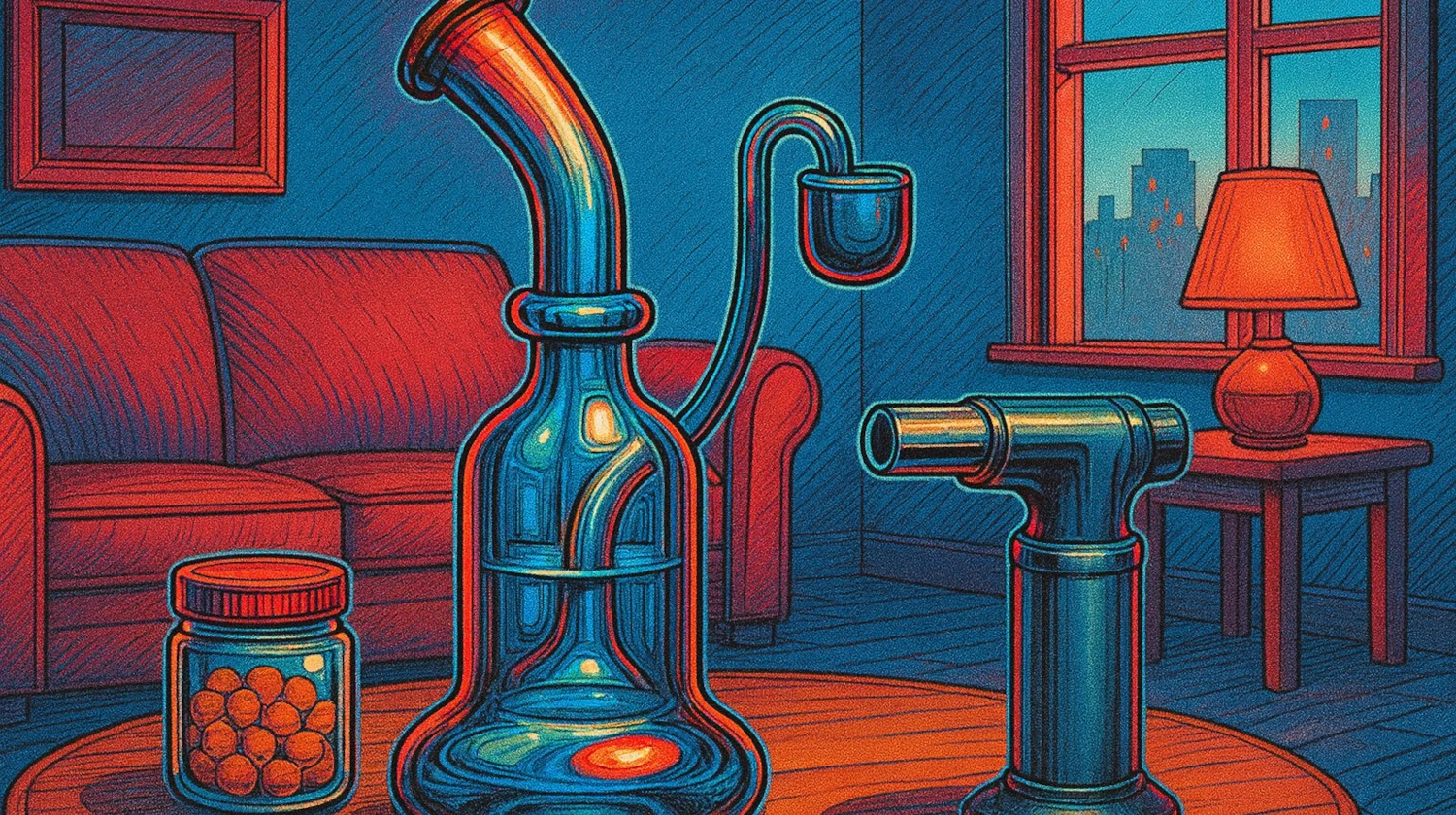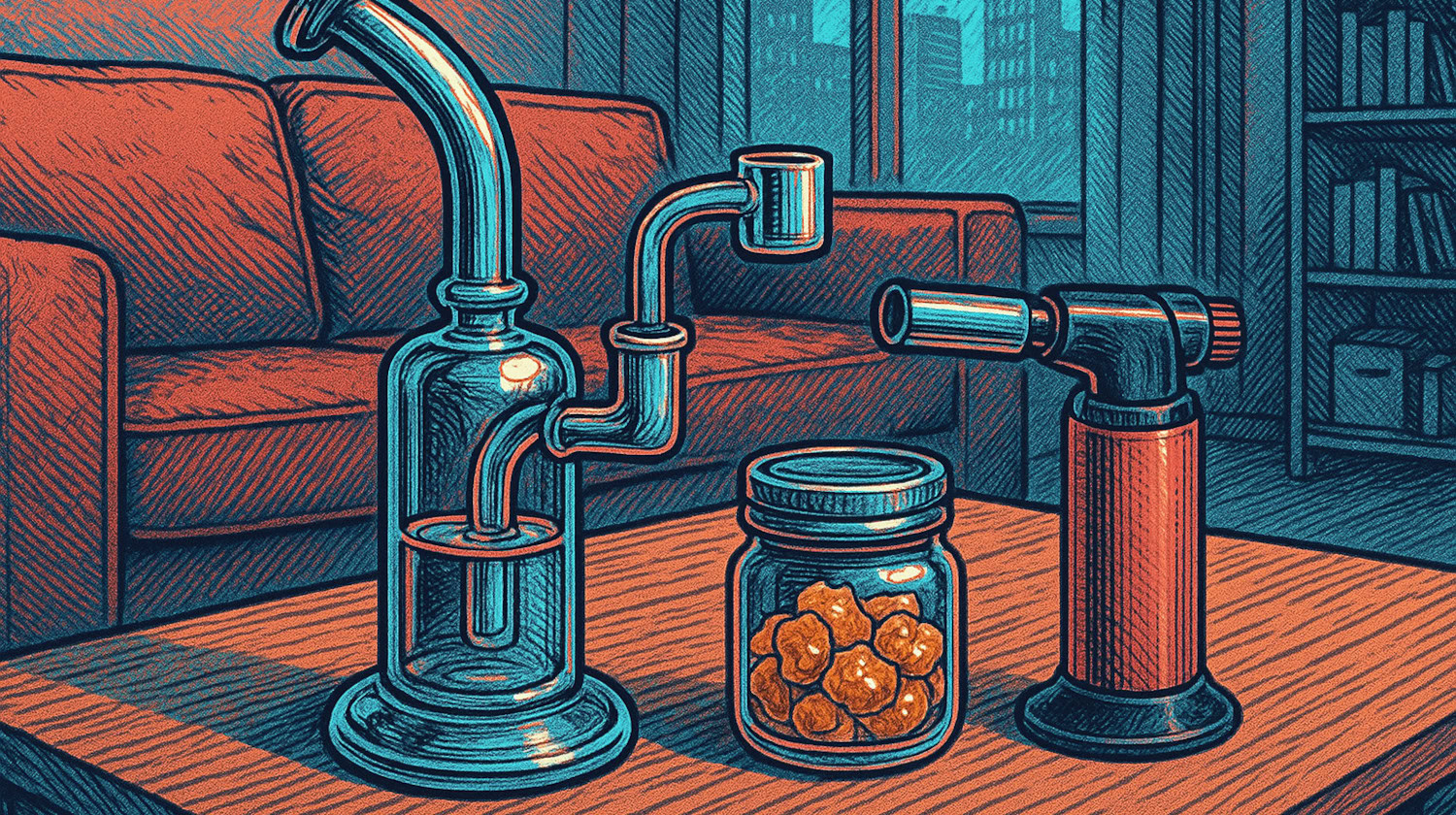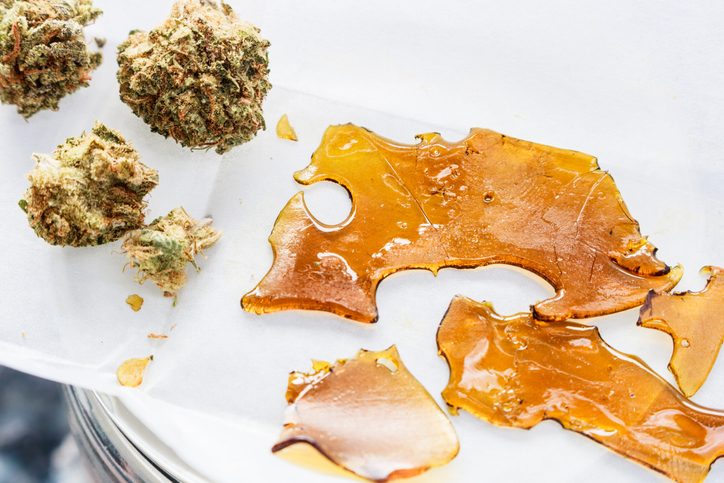In This Article
- What Are Cannabis Concentrates?
- Cannabis Concentrates vs Extracts
- Top Types of Cannabis Concentrates
- Wax
- Shatter
- Rosin
- Live Resin
- Hash
- Budder and Badder
- Diamonds and Sauce
- Oil Cartridges
- Pros and Cons of Concentrates
- Advantages
- Disadvantages
- How Are Cannabis Concentrates Typically Used?
- Tips for Buying Cannabis Concentrates
Key Takeaways About Cannabis Concentrates
- Cannabis concentrates are highly potent products made by isolating various active plant compounds.
- Different forms include wax, shatter, rosin, hash, live resin, and many more.
- Concentrates offer strong effects but tend to be more expensive and require additional tools for consumption.
Cannabis comes in many forms, and concentrates have quickly become one of the most sought-after products of the modern era. Still, all the names, textures, and tools can leave some newcomers unsure where to start.
There are just a handful of common ways manufacturers pull these potent extracts from the plant, leaving only subtle differences between the likes of wax, rosin, shatter, and resin. Once you're familiar with them, you'll be well on your way skillful dabbing.
What Are Cannabis Concentrates?
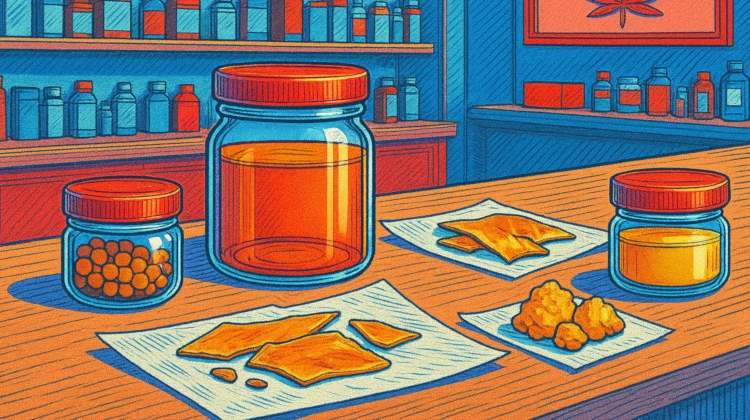
Cannabis concentrates are high-potency products made by using complex, precision extraction machines to pull only the most essential and desirable parts out of the plant, like THC, CBD, and terpenes.
Doing this literally concentrates high amounts of cannabinoids and terpenes into a compact and potent package. That's why most strains test between 15 and 30 percent THC, but concentrates often push past 70 percent and can reach into the upper 90s with some types.
Concentrates vary in many ways, creating a world of options. One of the core ways they differ is by their profile, or what they take from the plant.
In some cases, the entire plant is extracted, creating a full-spectrum or whole-plant extract. Other products may extract specific sets of compounds, but not the entire plant. These are often called distillate products. And in some cases, the plant is deconstructed to a single compound, turning the bushy green bud into a white powder called an isolate.
Each concentrate also takes on its own texture. Some stick like sap, others crumble, and a few snap like glass. These differences stem from the techniques used to make and finish the product, giving buyers a range of options.
Cannabis Concentrates vs Extracts
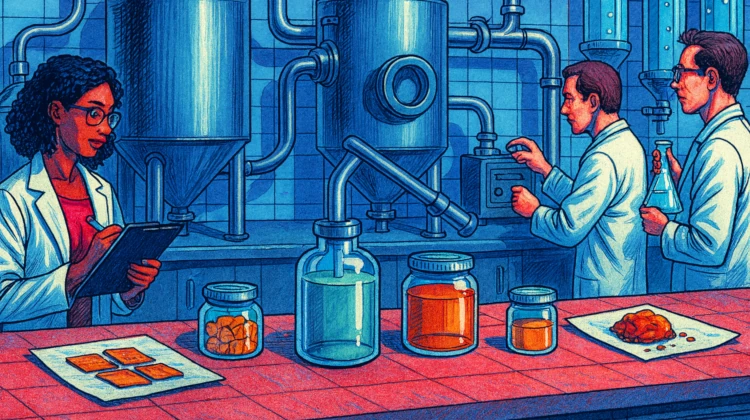
The words “concentrates” and “extracts” often get used as if they mean the same thing. In many cases, that works fine, but there is a difference worth knowing.
“Concentrates” refers to the broader category. Basically, any product that isolates compounds from the cannabis plant falls under this grouping. Some extraction methods use solvents, while others rely on chemical-free methods like ice water, heat, pressure, and mechanical separation.
Extracts require solvents during the extraction process. These products use solvents such as butane, propane, ethanol, or carbon dioxide to extract compounds from the plant, then refine the solvent away. Often, these processes strip the plant of its terpenes, which can reduce the effect, flavor, and aroma if not reintroduced later in the process.
Rosin is a good example. It is pressed with heat and pressure, no solvents needed, so it counts as a concentrate but not an extract. Meanwhile, many popular concentrates, ranging from Rick Simpson Oil to live resin to distillates to budder and beyond, are all solvent-based extracts.
It’s important that all solvent-based products come from licensed manufacturers that properly remove residual solvents during processing to ensure safety.
Top Types of Cannabis Concentrates
Dispensaries often stock a wide variety of concentrates. Each has its own texture, flavor profile, and common uses.
As a disclaimer, because most concentrates contain very high levels of THC, they can cause dizziness, anxiety, or rapid heart rate in some consumers. Inhaled products also carry the same respiratory risks as smoking.
Wax
A soft, pliable concentrate with a texture similar to candle wax that’s usually made with butane extraction. Wax is popular for dabbing and vaping.
Shatter
A brittle, glass-like extract that breaks into pieces when handled. Shatter is one of the earliest and most recognizable concentrate types. It is valued for its purity and potency.
Rosin
A solventless concentrate made by pressing cannabis flower or hash with heat and pressure. Rosin typically preserves terpenes well and appeals to consumers seeking products free of chemical solvents.
Live Resin
Live resin is an extract made from flash-frozen cannabis plants instead of dried flower. This method captures more terpenes, giving live resin a fresh and flavorful profile.
Hash
Hash is often called the original cannabis concentrate. Producers make it by collecting the plant’s resin glands, known as trichomes, and pressing them into a solid brick or ball. The result is dense, aromatic, and usually dark in color.
When those same trichomes stay loose instead of pressed, the product goes by another name: kief.
Budder and Badder
Budder and badder are whipped extracts with textures that resemble their names. These products are easy to handle and preserve strong flavors.
Diamonds and Sauce
A crystalline concentrate often paired with a terpene-rich sauce, which adds flavor and balances the diamonds’ high potency.
Oil Cartridges
Pre-filled vape cartridges containing cannabis oil offer convenience and portability, though they can vary in quality and price.
Pros and Cons of Concentrates
Like any cannabis product, concentrates have benefits and drawbacks.
Advantages
- Concentrates contain much higher potency than flower in smaller amounts.
- A wide range of textures and types gives buyers plenty of options.
- Terpenes often carry the plant’s most distinct flavors and aromas, and are believed to also shape the overall effects felt.
- Concentrates can be dabbed, vaped, or added to smoked flower for ample options.
Disadvantages
- High-potency concentrates can overwhelm even experienced users.
- Extra tools like dab rigs, torches, or pens can make things more expensive.
- Poorly made products may carry residual solvents, muted flavors, or uneven consistency.
- Concentrates generally cost more than standard flower, averaging $25-$35 per gram.
- Top-tier products can cost a premium, sometimes over $100 per gram.
- Smoking or vaping concentrates may irritate the lungs or worsen symptoms for people with respiratory issues.
How Are Cannabis Concentrates Typically Used?
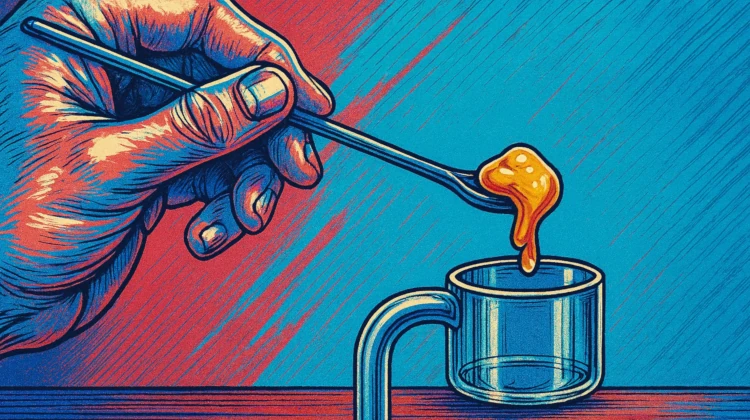
Concentrates can be enjoyed in several ways. The most popular and commonly utilized options include:
- Dabbing: Delivers fast and heavy effects by vaporizing concentrates on a heated dab rig or handheld device. It’s important to use the correct temperature and avoid overheated nails, as high temperatures can release harmful compounds or cause burns.
- Vape pens: A concise, portable option for oils and wax, with disposable and refillable cartridge choices.
- Flower toppers: Adding concentrates like kief or wax onto dry flower can boost potency and effects felt.
- Edible infusions: Concentrates are sometimes infused into foods or drinks, often delivering substantial effects in 15 to 120 minutes. Because the effects of edibles take longer to kick in, it’s easy to consume too much. Wait at least two hours before considering another dose.
- Specialty products: Moon rocks and hash holes are popular examples of how producers can combine concentrates with flower to create unique, high-potency smoking experiences.
Be sure to consider the onset time, duration, and effects when choosing the ideal concentrate. Each method delivers different timing and duration of effects.
For example, dabbing tends to hit hard and fast while lasting just a couple of hours. Meanwhile, edibles infused with concentrates take longer to kick in but can last six to eight hours once they do.
Tips for Buying Cannabis Concentrates
The concentrate market offers plenty of variety, but not every product delivers the same level of quality and trust.
The most important step is making sure concentrates come from licensed dispensaries that test through credible labs, not facilities known for lab shopping or inflating results.
Transparent labeling should be the next step. Look for products that list potency, strain, and extraction method on the label. If not on the label or packaging, look for a link or QR code on their website for this information.
Appearance and brand reputation should also guide the choice. Fresher concentrates often show lighter colors and lighter, golden textures, while darker or inconsistent products may signal lower quality.
Established brands and licensed shops usually provide safer and more reliable products, and consumer reviews can add a helpful perspective on what actually holds up. Only adults 21 and older, or state-registered medical cannabis patients, should purchase or use cannabis products in states where it’s legal.
The information in this article and any included images or charts are for educational purposes only. This information is neither a substitute for, nor does it replace, professional legal advice or medical advice, diagnosis, or treatment. If you have any concerns or questions about laws, regulations, or your health, you should always consult with an attorney, physician or other licensed professional.

